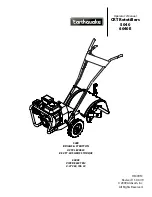
21
ANSI/ASSP Z359.11 American National Standard
Annex A
ANSI/ASSP Z359 Requirements for
Proper Use and Maintenance of Full Body Harnesses
12. Frontal
– The frontal attachment serves as a ladder climbing connection for guided-type fall arresters where there is no
chance to fall in a direction other than feet first, or may be used for Work Positioning. Supporting the user, post-fall or
during work positioning, by the frontal attachment will result in a sitting body position, with the upper torso upright, with
weight concentrated on the thighs and buttocks. When supported by the frontal attachment the design of the Full Body
Harness shall direct load directly around the thighs and under the buttocks by means of the sub-pelvic strap.
If the frontal attachment is used for Fall Arrest, the Competent Person evaluating the application should take measures to
ensure that a fall can only occur feet first. This may include limiting the allowable free fall distance.
13. Shoulder
– The shoulder attachment elements shall be used as a pair, and are an acceptable attachment for Rescue and
Entry/Retrieval. The shoulder attachment elements shall not be used for Fall Arrest. It is recommended that the shoulder
attachment elements be used in conjunction with a yoke which incorporates a spreader element to keep the Full Body
Harness shoulder straps separate.
14. Waist, Rear
– The waist, rear attachment shall be used solely for Travel Restraint. The waist, rear attachment element shall
not be used for Fall Arrest. Under no circumstances is it acceptable to use the waist, rear attachment for purposes other
than Travel Restraint. The waist, rear attachment shall only be subjected to minimal loading through the waist of the user,
and shall never be used to support the full weight of the user.
15. Hip
– The hip attachment elements shall be used as a pair, and shall be used solely for Work Positioning. The hip
attachment elements shall not be used for fall arrest. Hip attachments are often used for Work Positioning by arborists,
utility workers climbing poles, and construction workers tying rebar and climbing on form walls. Users are cautioned against
using the hip attachment elements (or any other rigid point on the Full Body Harness) to store the unused end of a Fall
Arrest lanyard, as this may cause a tripping hazard, or, in the case multiple leg lanyards, could cause adverse loading to the
Full Body Harness and the wearer through the unused portion of the lanyard.
16. Suspension Seat
– The suspension seat attachment elements shall be used as a pair, and shall be used solely for Work
Positioning. The suspension seat attachment elements shall not be used for Fall Arrest. Suspension seat attachments are
often used for prolonged work activities where the user is suspended, allowing the user to sit on the suspension seat formed
between the two attachment elements. An example of this use would be window washers on large buildings.
User Inspection, Maintenance, and Storage of Equipment
Users of Personal Fall Arrest Systems shall, at a minimum, comply with all manufacturer instructions regarding the inspection,
maintenance and storage of the equipment. The user’s organization shall retain the manufacturer’s instructions and make them
readily available to all users. See ANSI/ASSP Z359.2, “Minimum Requirements for a Comprehensive Managed Fall Protection
Program”, regarding user inspection, maintenance, and storage of equipment.
1. In addition to the inspection requirements set forth in the manufacturer’s instructions, the equipment shall be inspected by
the user before each use and, additionally, by a Competent Person, other than the user, at intervals of no more than one
year for:
•
Absence or illegibility of markings.
•
Absence of any elements affecting the equipment form, fit or function.
•
Evidence of defects in, or damage to, hardware elements including cracks, sharp edges, deformation, corrosion,
chemical attack, excessive heating, alteration and excessive wear.
•
Evidence of defects in or damage to strap or ropes including fraying, unsplicing, unlaying, kinking, knotting, roping,
broken or pulled stitches, excessive elongation, chemical attack, excessive soiling, abrasion, alteration, needed or
excessive lubrication, excessive aging and excessive wear.
2. Inspection criteria for the equipment shall be set by the user’s organization. Such criteria for the equipment shall equal or
exceed the criteria established by this standard or the manufacturer’s instructions, whichever is greater.
3. When inspection reveals defects in, damage to, or inadequate maintenance of equipment, the equipment shall be
permanently removed from service or undergo adequate corrective maintenance, by the original equipment manufacturer or
their designate, before return to service.
Maintenance and Storage
1. Maintenance and storage of equipment shall be conducted by the user’s organization in accordance with the manufacturer’s
instructions. Unique issues, which may arise due to conditions of use, shall be addressed with the manufacturer.
2. Equipment which is in need of, or scheduled for, maintenance shall be tagged as unusable and removed from service.
3.
Equipment shall be stored in a manner as to preclude damage from environmental factors such as temperature, light, UV,
excessive moisture, oil, chemicals and their vapors, or other degrading elements.
Summary of Contents for DBI SALA EXOFIT X200
Page 12: ...12 Figure 8 Donning the Harness 1 2 3 4 5 6 Figure 9 Securing Lanyards with Loop Ends A B C...
Page 22: ......
Page 23: ......




































